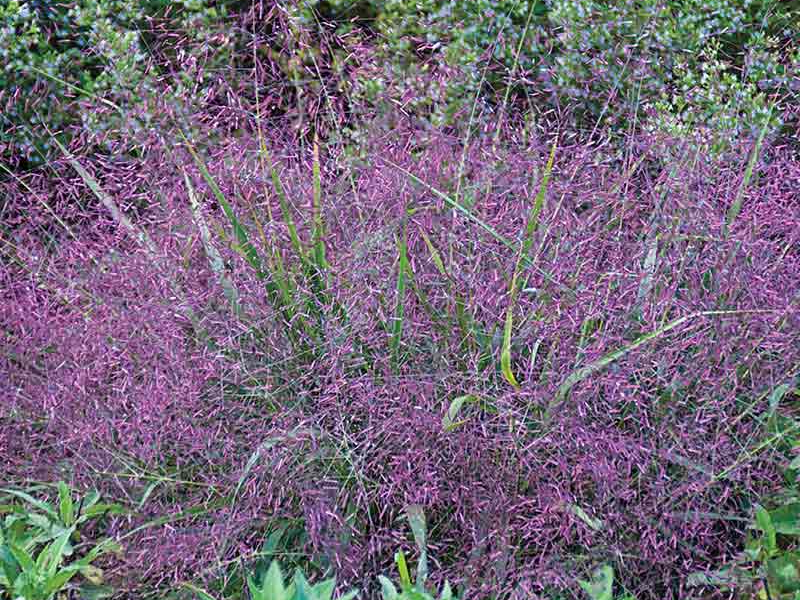Purple Love Grass
Eragrostis spectabilis
Click here to download a PDF of this plant information page (for printing).

Sun Exposure: Full Sun
Season of Interest: Summer, Fall
Bloom Time: August - September
Bloom Color: Purple
Height: 8 to 14 in.
Spread: 10 to 16 in.
Spacing: 16 in.
Water Needs: Drought tolerant
Maintenance: Cut back in winter
Soil Type: Clay, Loam, Sandy, Rocky
Soil pH: Acidic, Neutral
Soil Drainage: Well drained
Pests: Aphids, Snot bugs
Diseases: Leaf spot
Wildlife: Butterflies, Birds

Description:
Purple love grass is a native grass in Eastern North America with beautiful flowers that look like reddish-purple clouds when they bloom in late summer through early fall. They are beautiful in dried flower arrangements as well. It is an important member of efforts related to habitat remediation and water conservation. Preservation of natural ecology and our natural resources are important to gardeners these days. Perennial grasses are a great option for accomplishing these efforts in our own gardens. Another interesting reason to plant a native "short" grass is for erosion control. Planted native grasses reduce flooding as their deep roots hold water and release it slowly – water that may otherwise carve the landscape and leach into the flood plain.
While this perennial grass isn’t short to most homeowners, at least by turf grass standards; it is considered a short grass in botanical terms. Purple lovegrass is a great plant for perennial borders and screens, as well as a liner for garden paths year-round. Both live and dead foliage is striking and attract various beneficial insects and wildlife. It is a host for the lovely Zabulon skipper butterfly larvae and provides nesting materials and food for ground-dwelling birds. For more information see:
plants.ces.ncsu.edu/plants/eragrostis-spectabilis
Care and Growing Tips:
Like most members of the grass family, purple love grass needs a sunny location with six or more hours of direct sun. Some afternoon shade is alright. Warm areas are best for this native grass, but freezing weather is not an issue. Purple lovegrass can handle the intense heat of late summer up to 120 degrees Fahrenheit. It also handles lows below zero in winter. For a couple of weeks after transplanting water it slowly and deeply to help its roots become established. After that, there’s no need for regular watering.
Purple love grass has a wide tolerance for soil types. Sandy or gravelly soil is perfect; sandy soil is great because it is well-drained; and clay soils that that drain well are also an effective growing medium. Amend the soil with agricultural sand if needed to provide good drainage.
This plant needs no fertilizer. However, feeding this plant species with a high nitrogen fertilizer once established will encourage new growth. To avoid burning the roots of the plant, dilute a full spectrum liquid fertilizer and feed the base of the plant in your garden. Fertilizing this way assists the plants in developing mostly basal leaves, but this feeds directly into flower development later in the summer season. While cutting these plants is not necessary, you can prune them to the ground in the garden in fall through winter. This can assist plants in perennial borders by helping them maintain their softly mounding habit. Do not cut them back in spring as they begin to grow new green leaves.